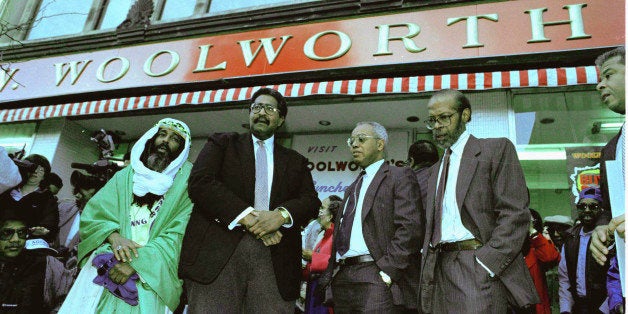
Late in the afternoon of February 1, 1960, four young black men -- Ezell Blair Jr., David Richmond, Franklin McCain, and Joseph McNeil, all students at North Carolina Agricultural and Technical College in Greensboro -- visited the local Woolworth's five-and-dime store. They purchased school supplies and toothpaste, and then they sat down at the store's lunch counter and ordered coffee.
"I'm sorry," said the waitress. "We don't serve Negroes here."
The four students refused to give up their seats until the store closed. The local media soon arrived and reported the sit-in on television and in the newspapers.
The four students returned the next day with more students, and by February 5 about 300 students had joined the protest, generating more media attention. Their action inspired students at other colleges across the South to follow their example. By the end of March sit-ins had spread to fifty-five cities in thirteen states. Many students, mostly black but also white, were arrested for trespassing, disorderly conduct, or disturbing the peace.
At the same, even many liberals -- black and white -- thought that they were too radical. But their actions galvanized a new wave of civil rights protest.
At the invitation of organizer Ella Baker, over Easter weekend -- April 16-18 -- several hundred sit-in activists and their allies came to Shaw University, a black college in Raleigh, North Carolina, to discuss how to capitalize on the sit-ins' growing momentum and publicity. This gathering became the founding meeting of the Student Nonviolent Coordinating Committee (SNCC). Its growing base of supporters played key roles in the freedom rides, marches, and voter registration drives that eventually led Congress to enact the Civil Rights Act of 1964 and the Voting Rights Act of 1965. Many SNCC activists became key leaders in subsequent battles for social justice, including Congressman John Lewis and Marion Wright Edelman, founder of the Children's Defense Fund.
This is how people make history.
There are tens of thousands of young people on campuses today, working to promote racial justice, working for living wages, pushing for environmental sustainability and for divestment in fossil fuel corporations, fighting global sweatshops, demanding an end to sexual assault, and many other causes.
The struggle continues.
Peter Dreier is professor of politics and chair of the Urban & Environmental Policy Department at Occidental College. His most recent book is The 100 Greatest Americans of the 20th Century: A Social Justice Hall of Fame (Nation Books).
